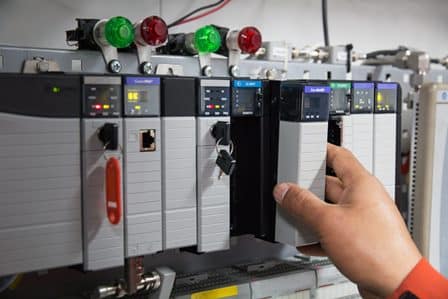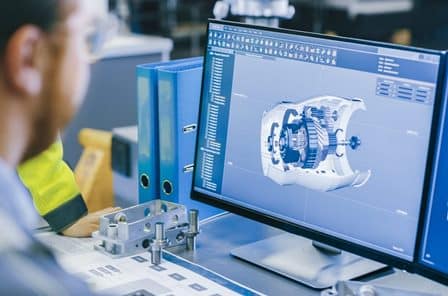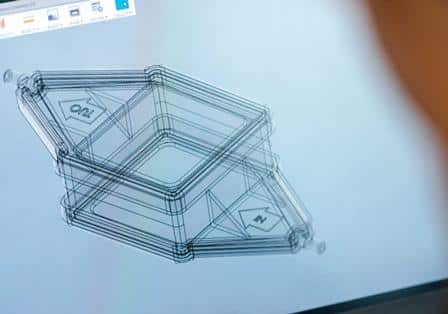Back in 2019 EIT’s Dean of Engineering Steve Mackay said that many of the technological advancements in the world are changing the landscape of the engineering industry, and engineering micro-credentials could be the ultimate answer to this rapid change.
It is creating gaps in practical knowledge. Working engineers as a result need constant upskilling to address these gaps, whether it is as simple as knowing the latest safety processes or more in-depth knowledge of new systems.
What is so important is that engineering micro-credentials that are signed sealed and delivered from educational institutions, as well as company training and even online courses, are addressing those gaps and working engineers are the ones who benefit the most.
At EIT we believe that micro-credentials for engineers are the key to helping graduates stay up-to-date with new technologies across the industry, and despite having our own range of these credentials, we also acknowledge that there are numerous ways graduates and working engineers can stay up-to-date. We explore them now.

Free learning resources
It takes self-motivation to master something by yourself, but there are many advantages to it.
LinkedIn, arguably the largest career-minded social media platform in the world, claimed in one of its latest press releases that jobs are changing swiftly, even if you’re in the same position.
Skillsets, according to their data, showed that if you had the same job you have currently your skillset would have changed by around 25%, and it’s expected to double by 2027.
LinkedIn members, for example, added 286 million skills to individual profiles in 2021. The company estimates that 40% of recruiters use skills data when hiring on the platform.
LinkedIn Learning released its 5th annual Workplace Learning Report in 2021, according to this report the top 10 skills more likely to be added to LinkedIn profiles during 2021 included; Operations, Corporate training, HR management, People development, Training
and development, Presentation skills, Learning management skills, Analytical skills, Engineering, and Finance skills.
There is a range of engineering courses available on the platform currently and this includes practical engineering, basic circuits, Python, SolidWorks, and hundreds of other short-form courses (micro-credentials) meant for engineers to be able to gain more skills data.
Depending on what you have access to platforms like Coursera, Futurelearn and YouTube also offer many opportunities for self-learning.
At EIT we host regular online engineering webinars for engineers who want to stay up to date with the most recent trends, new developments, and technology. They are free of charge, usually run for 60 minutes and participants receive a certificate of attendance which can be claimed as CPD hours.
World-class industry professionals and academics run these sessions, and you can ask questions at the end.
The easiest way to get notified of upcoming EIT webinars is to subscribe to notifications on Eventbrite when you register for a webinar.

Workshops and group training
Group training is most often company-specific and allows engineers’ competencies to become perfectly aligned with their employer’s requirements.
At EIT we see the benefit of in-house engineering group training because of customization, flexibility, and interactivity.
It is also “delivered to your door” by getting trainers on-site, which is a huge benefit for many companies, especially those in remote locations.
The role of CPD (Continuous Professional Development)
Members of engineering industry bodies are required to keep their skills up to date and relevant to the industry by completing a certain number of structured learning.
With Engineers Australia, Chartered members and NER registrants are required to complete 150 hours in three years. There may be different (or more specific) requirements by other organizations.
Types of learning which can be counted towards CPD may include any tertiary courses, short courses, workshops, seminars, conferences, technical meetings, workplace learning and private study.
As we can see, these are types of engineering micro-credentials in action and provide opportunities for skills development as well as formal recognition.

Short training courses
The most popular EIT engineering micro-credentials are our 3-months long Professional Certificates courses.
They are not as labor-intensive and more cost-effective as completing a diploma, Advanced Diploma, or Bachelor’s degree, but provide access to similar content and practical experiences that students in the accredited course have access to.
For example, Professional Certificate of Competency in Smart Grids and Professional Certificate of Competency in Renewable Energy Systems are the same units from EIT’s Master of Electrical Engineering degree.
Professional Certificate of Competency in Advanced TCP/IP-Based Industrial Networking
Designed for engineers and technicians who need practical knowledge in…Read moreProfessional Certificate of Competency in Allen Bradley Controllogix / Logix5000 PLC Platforms
Designed for engineers and technicians who need practical knowledge in…Read moreProfessional Certificate of Competency in Arc Flash Protection
Designed for engineers and technicians who work in the electrical…Read moreProfessional Certificate of Competency in Chemical Engineering and Plant Design
Designed for engineers and technicians who need practical knowledge in…Read moreProfessional Certificate of Competency in Circuit Breakers, Switchgear and Power Transformers
Designed for engineers and technicians who need practical knowledge regarding…Read moreProfessional Certificate of Competency in Control Valve Sizing, Selection and Maintenance
Designed for engineers and technicians who need a solid understanding…Read moreProfessional Certificate of Competency in Electrical Power System Fundamentals for Non-Electrical Engineers
Designed for engineers and technicians who need to understand the…Read moreProfessional Certificate of Competency in Electrical Power System Protection
Designed for engineers and technicians who need practical skills and…Read more
These courses, though short, do demand commitment. To obtain a certificate of completion for EIT’s Professional Certificates, students must achieve a 65% attendance rate at the live, online fortnightly webinars. Students are also expected to use remote labs to build their practical skills.
In addition, students must obtain a mark of 60% in the written or practical assignments, and must also obtain a mark of 100% in quizzes. If a student does not achieve the required score, they will be given an opportunity to resubmit the assignment to obtain the required score.
Marking means that students leave with up-to-date knowledge within their chosen course, and can apply it directly at work.

Undergraduate Certificates and Graduate Certificates as micro-credentials
Coined as “stackable qualifications” Undergraduate and Graduate Certificates are offered by universities and education providers to give potential students or graduates a taste of what is to come.
Thanks to a unit or module-specific information and study.
With these courses, every engineer can craft their own unique path, not just follow the one set by a university or a training provider (and widen their knowledge into other disciplines of engineering).
Graduate Certificate in Industrial Automation Engineering
Upon completion of this program, you will gain skills and…Read moreGraduate Certificate in Mechanical Engineering
Designed to prepare you for further career development in the…Read moreGraduate Certificate in Civil Engineering: Structural
Upon completion of this program, you will gain skills and…Read more52859WA Graduate Certificate in Renewable Energy Technologies
You will gain skills and knowledge in the latest advanced…Read moreGraduate Certificate in Civil - Railways Infrastructure Engineering
High-level professional and technical development from engineers working with track…Read moreGraduate Certificate in Safety, Risk and Reliability Engineering
Modern engineers face an intriguing set of challenges when tackling…Read moreGraduate Certificate in Programmable Logic Controllers and SCADA
Develop your expertise in Programmable Logic Controllers, and the concepts…Read moreGraduate Certificate in CAD and Computational Techniques
Develop your expertise in Computer Aided design (CAD), analyze problems…Read more
The demand for engineering micro-credentials
The paper The value of micro-credentials: The employer’s perspective gives insight into why these credentials are rising, and also why they’re needed.
The authors of the paper make the following points:
Employee skills can and should improve. Microcredentials help employers to identify authentic skills of potential employees, and can then also earmark areas that will need to improve during employment. It provides employee-specific training that accelerates employees within their own job.
- Competency is currency
Industry role players have suggested that competency and experience were valuable to employers, sometimes more than a degree. Participants in the study of the paper reported that recent graduates have mastered the knowledge to get their degree, but that did not always translate to their role within the industry.
Short courses were able to address this.
- Seat time is not always quality education
Spending years to finish a degree or qualification does not always mean employees have the skills needed within the industry, in fact, the paper believes a combination of short courses is often more valuable for employees. Not only is acquiring micro-credentials easier on the pocket but there’s also versatility in knowledge.
- Microcredentials can improve chances for further study
Students that have completed a qualification might be more industry-relevant when they complete a range of micro-credentials before transferring to a postgraduate degree. If picked wisely some micro-credentials also count as a credit to complete a degree or postgraduate degree. The combination of solid education with micro-credentials makes someone more employable and not susceptible to the idea of being “over-educated” within their relevant field.
Undergraduate Certificate in Industrial Automation Engineering
Upon completion of this undergraduate certificate, you will have fundamental…Read moreUndergraduate Certificate in Electrical Engineering
Upon completion of this undergraduate certificate, you will have fundamental…Read moreUndergraduate Certificate in Mechanical Engineering
Upon completion of this undergraduate certificate, you will acquire fundamental…Read moreUndergraduate Certificate in Civil Engineering
Civil and structural engineering is one of the oldest forms…Read moreUndergraduate Certificate in Electrical and Electronics Engineering
Upon completion of this undergraduate certificate, you will be able…Read moreUndergraduate Certificate in Industrial Instrumentation and PLC Programming
Upon completion of this undergraduate certificate, you will be able…Read moreUndergraduate Certificate in Engineering Foundations
Upon completion of this undergraduate certificate, you will be able…Read more
Resources:
(3) (PDF) The value of micro-credentials: The employer’s perspective. Available from: https://www.researchgate.net/publication/341135765_The_value_of_microcredentials_The_employer%27s_perspective [accessed Apr 05 2022].
Read our previous articles on micro-credentials here:
The Changing Landscape of Education: Lifelong Learning and Micro-Credentials

























